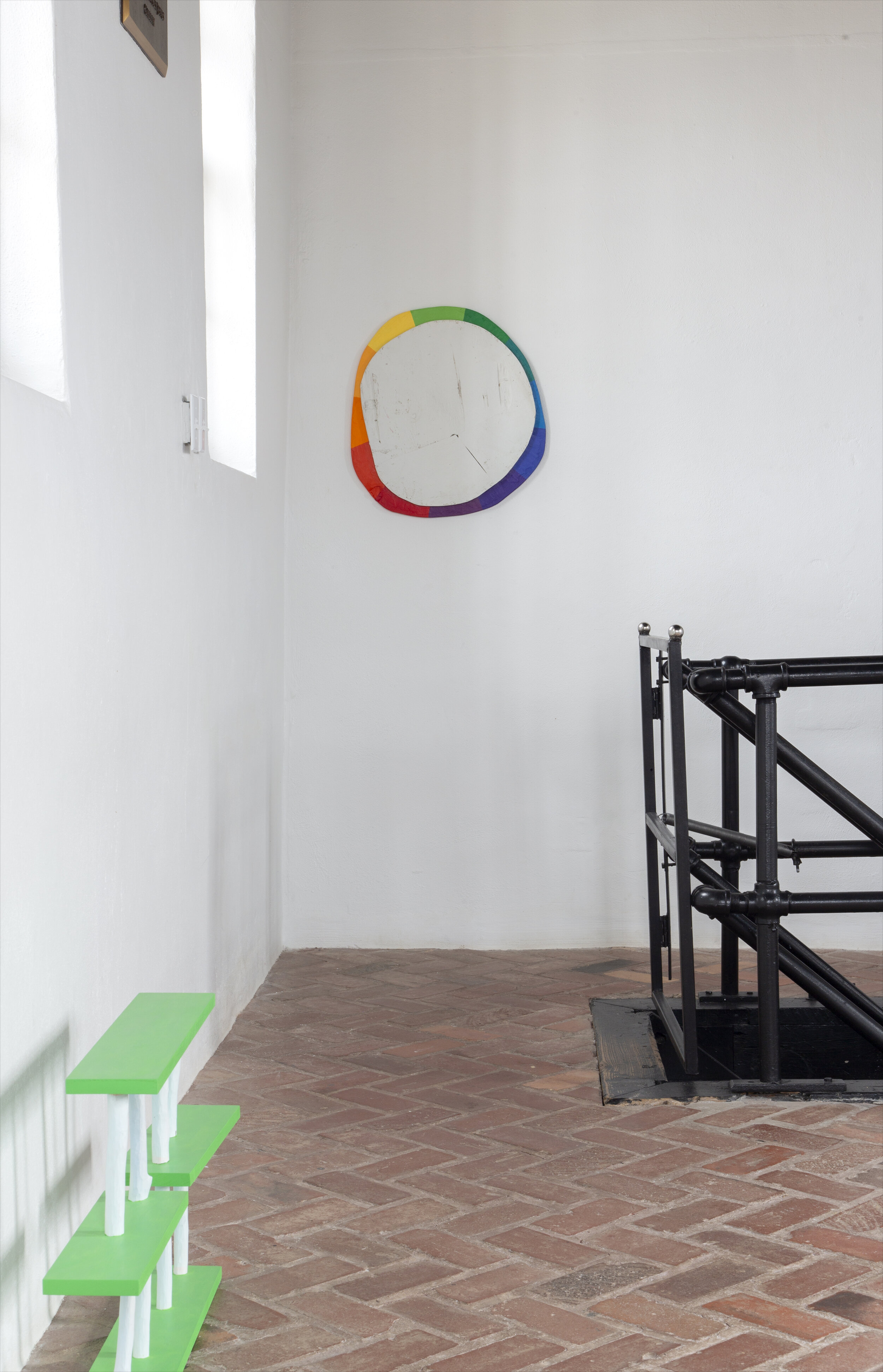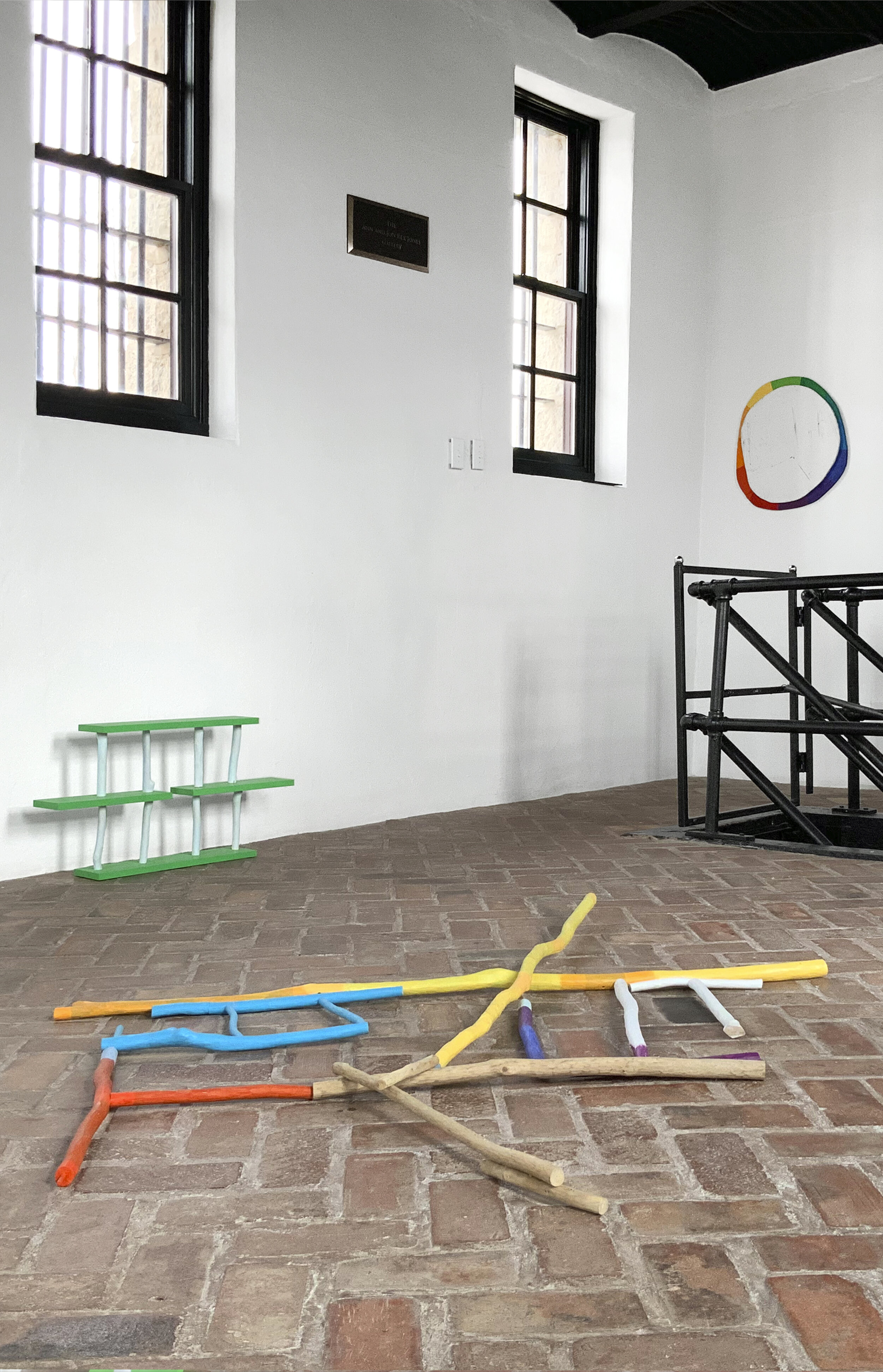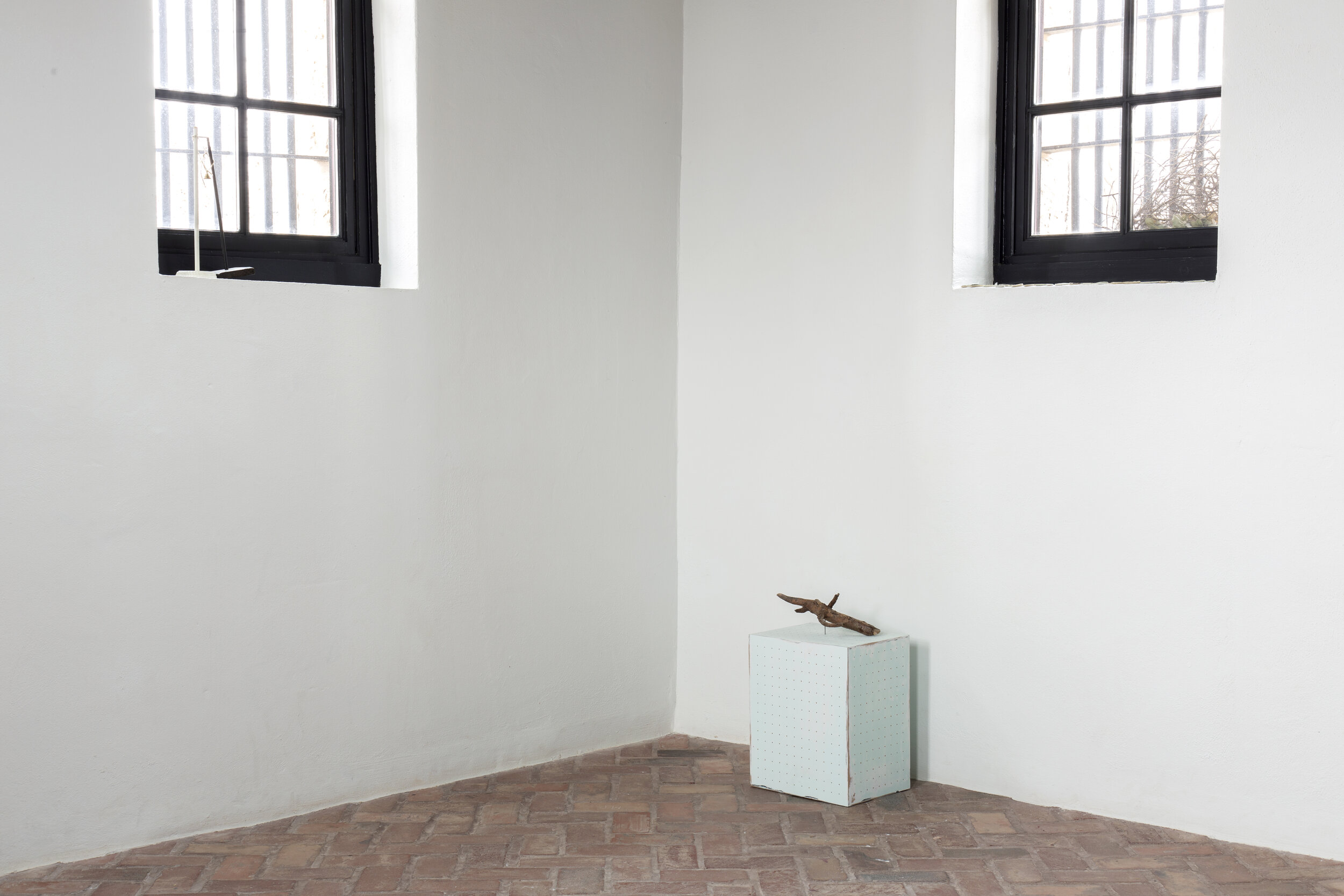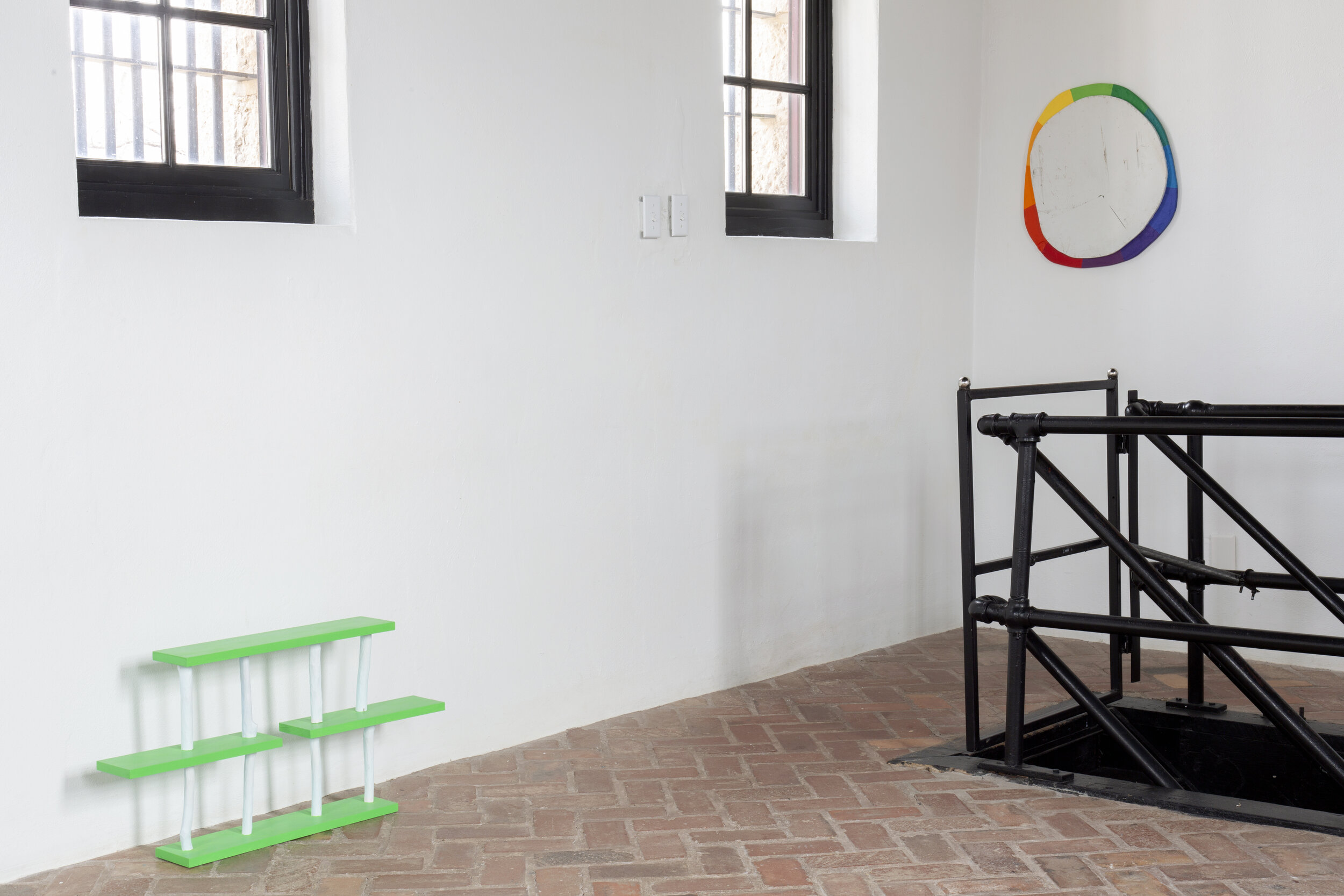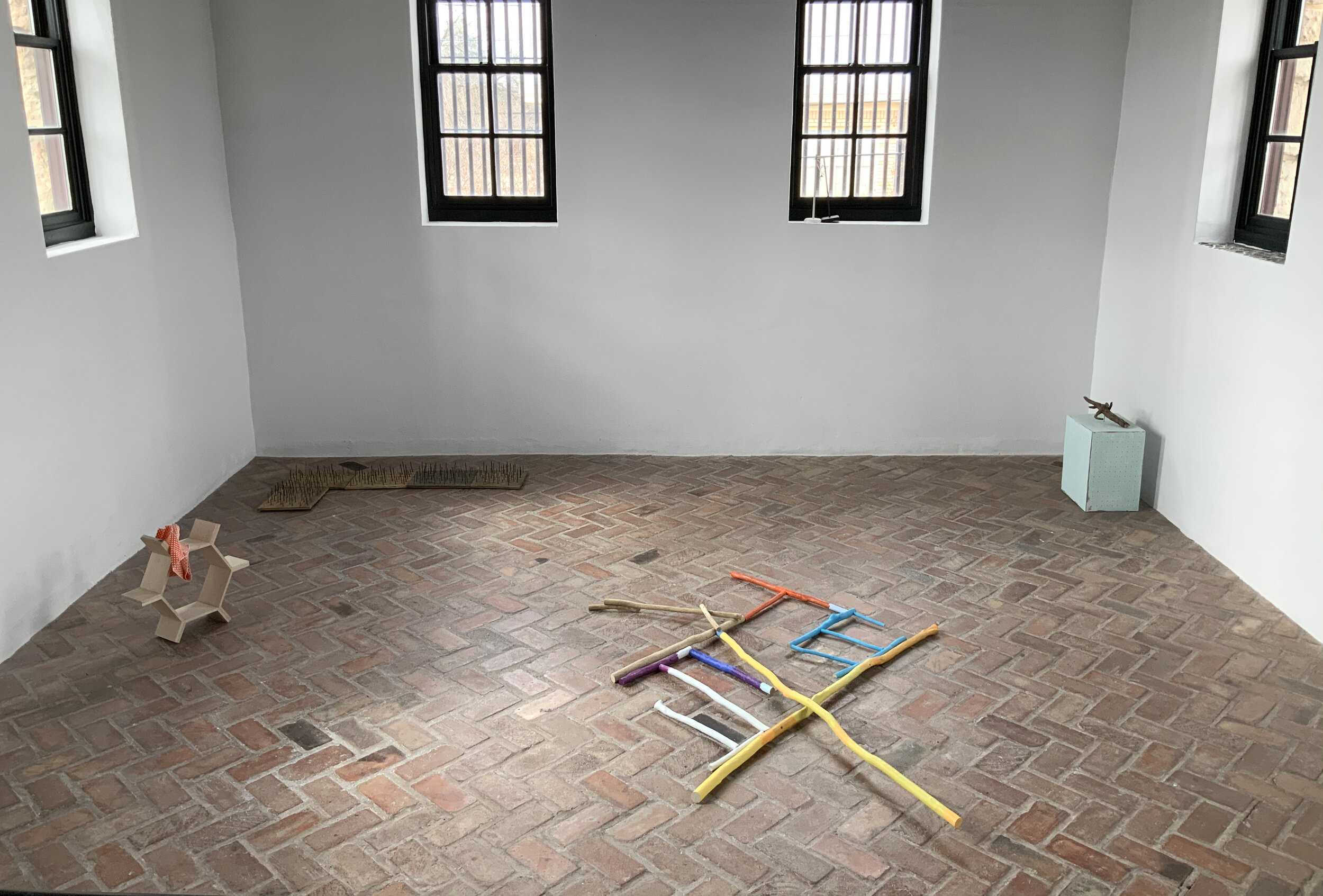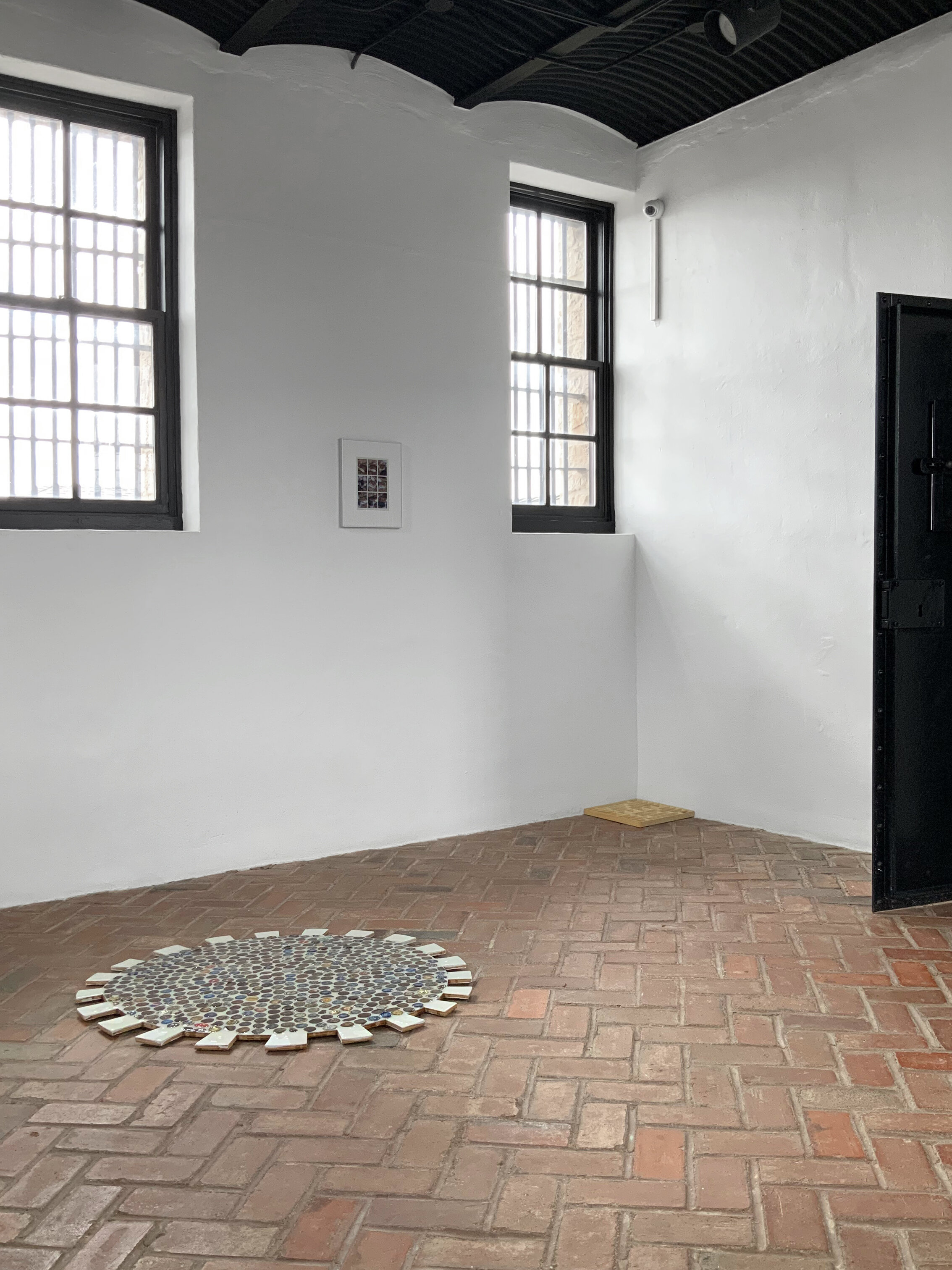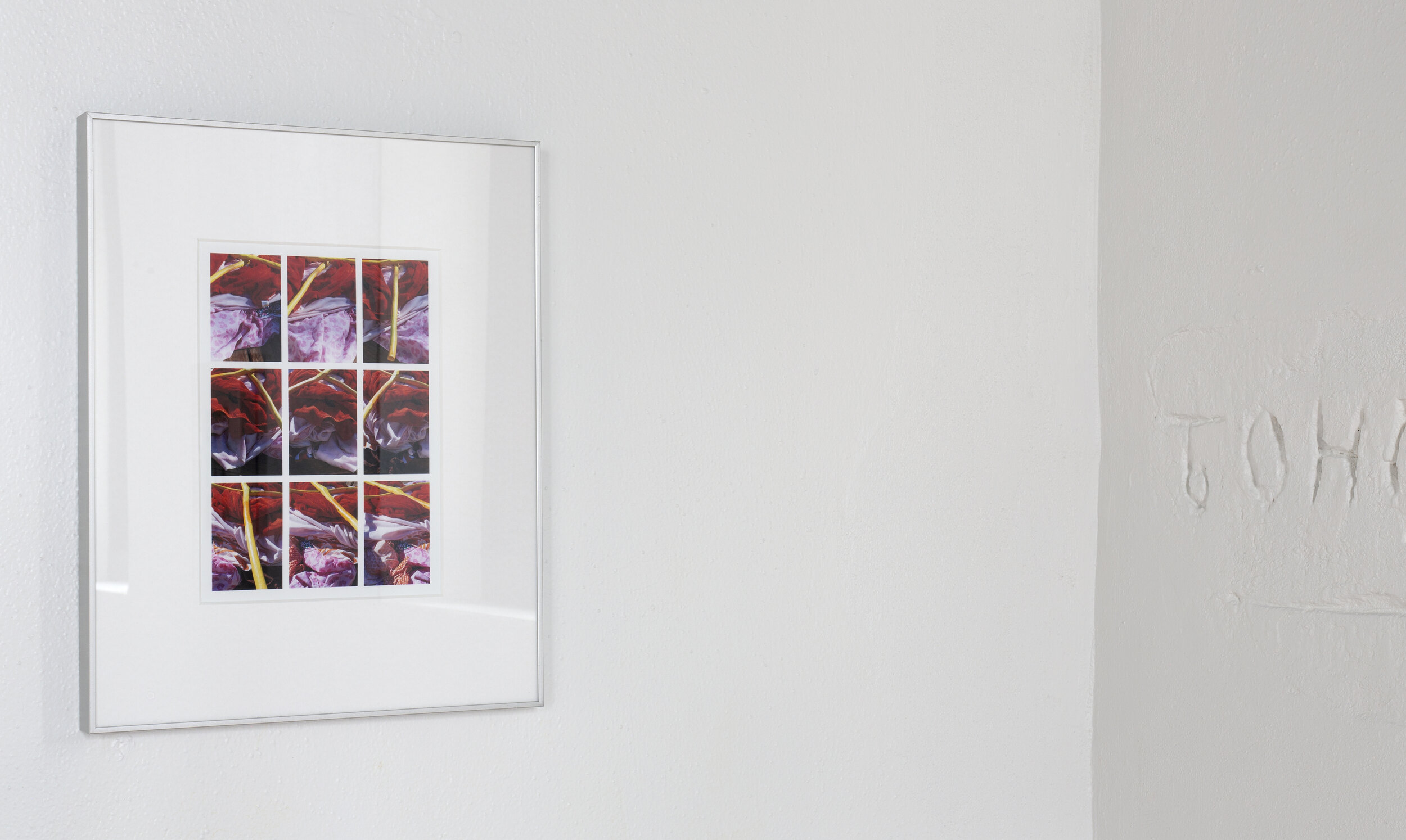For the last few years Austin-based artist Sterling Allen has been creating outside the confines of the typical “white cube” of a gallery or museum space, and even his studio. After strategically locating an urban building site that is often ignored or forgotten, he places his own sculptural works with objects and materials he finds on-site into an outdoor exhibition. Responding to the location and architectural elements, he creates a uniquely temporary exhibition that he quickly photographs. This documentation becomes an important aspect of his work as Allen admits, “This idea of the photos standing in for the experience or objects (sculpture) is troublesome and something I find endlessly interesting to engage with.” His artworks and selected discarded materials found on-site are utilized again in a more formal “art” setting; referencing the documentation as a guide within a new environment. The OJAC invites viewers to see Allen’s response to the challenging and contextual jail cells.
Image: STERLING ALLEN, L Boogie (Three O Five), 2021, plywood, screws, 4 x 50 5/8 x 23 5/8 in. Courtesy the artist.
The 2021 Cell Series is generously supported by McGinnis Family Fund of Communities Foundation of Texas, Kathy Webster in memory of Charles H. Webster, and the National Endowment for the Arts, with additional funding from Jenny & Rob Dupree.
Patrick Kelly, Old Jail Art Center Executive Director and Curator, email interview with Sterling Allen.
PK: Let’s turn the clock back a bit. Please describe a Sterling Allen work, or series, from seven to ten years ago.
SA: So, I would say 7-10 years ago was a period when I was in graduate school and really coming to terms with what it meant to make sculpture. I hadn't really had much experience talking about that aspect of my work or really negotiating with my own tendencies and ways of working as I had started making sculpture on my own after undergrad. I realized that I was still heavily under the influence of photography and images as I was working in three dimensions and with objects. This caused some confusion and lots of false starts for me. I was trying to replicate the spirit and energy of scenarios I found in the world by translating photographs of things into sculpture. This was largely unsuccessful but it taught me a lot. I made a number of sculptures that played with optical illusion and tried to emphasize the pictorial which ultimately implicated a particular position for the viewer, or at least I thought they did. I thought about this in relation to how the camera records from a single perspective and you can fix this perspective by taking a picture. I also made a slew of collages and mixed media works that incorporated found frames and included images of stuff from my studio. I was treating these frames as material and the images that same way. The works didn't have a fixed orientation and there was a lot of experimentation happening. I was making things, taking pictures of them, printing pictures, re-contextualizing the images. I liked turning the sculptures into images that could easily be manipulated by printing and cutting paper, etc. I would also say generally I was less interested and less aware of installation aspects of making sculpture. Things tended to start and stop with a single piece, but that was beginning to change during that time.
PK: Even though you state some things seemed “unsuccessful,” it does seem like there are many things you are still investigating from that period in your work. From an artist's perspective…doesn’t it always seem like past work is unsuccessful in one way or another? Isn’t that what keeps serious artists evolving and moving forward?
SA: Yes, I think evolution is an important aspect in the career of an artist. I actually look to this a lot when I'm stuck and trying to take the next step forward. I really despise the idea of finding a gimmick, a material, or style of working and just sticking with it. This can be done in an interesting way if it's exhaustive and the artist stays hungry, but if it's simply because one has had some success or the work just flows easily, in my opinion I don't think it's the best thing. I'm always trying to find ways to not repeat myself or short circuit well tread pathways in my own practice. This may be to my own detriment in some ways, but it keeps me in the process of learning and allows me to experience the unsettled feeling when you are trying to get something figured out but you haven't yet mastered it. It's always nice to feel like you understand how to do something or what a body of work fully means, but usually that's only fun after the fact. To me, not knowing exactly what I'm doing during the formulation of the ideas and the beginnings of the work is the most exciting part of making art.
PK: I totally agree. That “not knowing during the formation and beginning” is why it is often difficult to verbally articulate what you’re doing. People may ask “tell me about this piece” and the reply should be, “Well, I can’t talk about this piece until I tell you about this other piece and the work I have done over the past X years.” It may not look the same but there are important connective threads. Okay, this is your interview…Do you sometimes look back at past work and discover that in the effort to not repeat yourself you may have not fully investigated something…that there was still something to glean?
SA: Yes, for sure. There are times where there are too many threads of an idea to act on them all and so going back to re-engage with some of those unfollowed threads is a productive thing for me. I am not the best sketchbook person, but I do use them and keep them and will often locate a particular time period and look through sketchbooks to see what else was percolating and how I might be able to pick up on things that I had forgotten about. I find looking through sketchbooks is often better than looking back at older 'finished' work in this regard. The stuff in the sketchbooks is just a spark most of the time. It hasn't been fully realized so there's room there.
PK: Can you describe your more recent work that involves installations of found and created objects along with their “documentation” in photographs?
SA: I've been working predominantly outside for the past few years, creating these really temporary installations using sculpture, raw material, and then objects and materials that I find at the sites. I scout sites that are not being used, somewhat downtrodden and forgotten about; then on the day of the installation, I'll load up my car with a bunch of work, material and my camera. I set about to install the finished sculptures like you would any exhibition, taking cues from the architecture and flow of the space. I will situate works in direct conversation with what a space has to offer. The way that the works get installed becomes part of the history of that work, and in subsequent installations I'll refer to how something was set up in the past. For example, if something was set up in a puddle, I might try to locate that work near water from there on out. Or if something is hung using two nails equidistant from a corner, I'll record that measurement and use it again later. In this way, I am thinking of the spaces as collaborators. As I mentioned, I often incorporate materials I find onsite into new works. Some of these new works come home to my studio with me after the whole process is documented. I really enjoy installing an exhibition and this began as a way for me to do that whenever I wanted, taking on a new spatial challenge each time. The fact that the process also generated a slew of new works was not the original intention. Originally, I was more interested in how the works would look documented in spaces that were further from the typical white cube or studio. For this reason and the fact that the installations are usually only up for a few hours and only seen by me, the documentation became really important. It's almost like when a performance is documented and if you weren't present as a viewer, you have the documentation as a way to experience the work. This idea of the photos standing in for experience or objects (sculpture) is troublesome and something I find endlessly interesting to engage with.
PK: Is part of this a reaction to the idea that it’s almost “expected” of artists to create discrete objects for consumption or their incorporation into the typical white cubes of institutions, gallery spaces, or collectors’ homes?
SA: I suppose it could be seen in part as a reaction to those expectations. I have had my fair share of those types of interactions with my work and I suppose I was looking for something else. In some ways, the pace of creating an exhibition meant for an institution or gallery space can be frustrating because there is so much lead up to the place where the show is done, that by the time you've made the work, documented it, priced it, written about it, talked about it, previewed it, etc., you no longer have the same feelings for it as when it was really exciting and fresh in the studio. I have created work for commercial gallery shows and have sold work in the past and that has been/always is rewarding, but I've found other ways of working to be more exciting. It was always a bummer to frame up a bunch of work and then bring it home after the show was over; then spend the next few years staring at the frames or wondering when you need to take them apart or whatever. The work I've been engaged with for the past few years isn't meant to be so precious or have to last forever. There's certainly a narrative that you can make a living selling your work, and I believe that's tougher to do than people think without compromising a lot. I suppose I'm just trying to follow my interests and focus less on those validations that you mentioned in your question.
PK: I could take that answer down a number of rabbit holes dealing with the viewer experience outside the context of an “art institution.” To play the devil’s advocate though—what about the viewer/participant that encounters one of your temporary “installations” or a resulting exhibit with a gallery? What do you think their take-away is with your work? Or do you concern yourself with what it may be?
SA: It's hard to say what someone walks away with after seeing my work. I don't really think about a specific thing I want them to learn or know afterwards. I take immense pleasure in investigating an exhibition, especially one that requires a little bit of work on my part to piece together. I suppose after I participate as a viewer like that, I feel stimulated and I'm more aware of myself and my senses than before. When I leave the exhibition, part of that is still active in me and I'm able to experience dinner or the walk to the car or the sky like that, too and that's a good feeling. If anything, I'd like for the viewer to be propelled to look a bit more or dwell on something for no clear reason as a result of spending time with my work. There's a lot in my work that has to do with play and discovery. I think we could all use more of that as it's difficult to carve out time to spend that way, though children do it all the time. Art is one way you can provide that opportunity for anyone.


